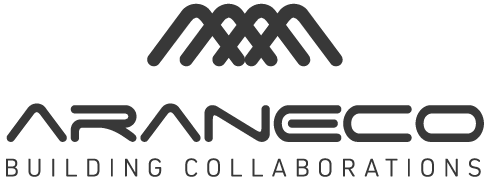Many business functions benefit from process optimization—and your contact center is no exception. Streamlining contact center workflows means less stress on your agents, faster resolutions for your customers, and more money in your pocket.
Here, we’re talking all about contact center optimization including how to augment your processes, which KPIs to track, and more.
Why you should optimize your contact center
Efficient contact center operations are not just advantageous, but instead necessary for sustained business. With disjointed processes and inefficient workflows, your contact center cannot run at an optimal pace and function as it should.
When things start to slow down as a result of disorganization, you risk:
What’s standing in the way of contact center optimization?

Businesses face a handful of hurdles between where they currently are and a fully optimized contact center operation—some of them are real, others are perceived. Effective optimization involves identifying the following challenges with clarity, addressing them systematically, and implementing targeted solutions to overcome these obstacles and drive continual improvement.
Legacy systems and infrastructure: Outdated technology infrastructure notoriously limits the ability of contact centers to adopt new tools that can improve their customer service processes. Legacy systems often lack compatibility with modern software solutions, such as cloud-based services and artificial intelligence (AI)-driven omnichannel communication platforms. This incompatibility can result in expensive and disruptive overhauls, acting as a significant optimization barrier.
Budget constraints: Both the software and hardware associated with contact center optimization—such as advanced VoIP phones, high-performance servers, and CRM systems, among other assets—often require significant investment. Fortunately, there are cost-effective, yet highly efficient contact center solutions available that allow organizations to optimally function and scale. To those ends, Webex Contact Center provides agents with AI-driven insights and tools—integrating seamlessly with existing systems to offer flexible, scalable solutions that accommodate various budgetary constraints.
Data silos and integration challenges: The use of multiple platforms leads to scattered data, complicating efforts to create a unified view of customer interactions, agent responsiveness, and other key metrics. This fragmentation obstructs efficient service delivery as agents cannot access complete customer histories or insights from other communication channels, leading to service gaps.
High contact center agent turnover: With 44% of agents actively seeking new work, contact centers face continual disruptions to service continuity and quality. Constant agent training and hiring drain resources and focus from strategic initiatives—degrading the quality of customer service as new agents take time to reach the proficiency of their predecessors.
Resistance to change: While half of employees are neutral to change, approximately 30% are reluctant. That leaves just 20% who are open to new processes that can improve operations. Hence why strategic change management is so important. Rather than abruptly imposing new systems and practices, successful change management involves engaging with and educating employees on the benefits of new technologies and processes, thereby fostering receptiveness.
To address these challenges, businesses need to use a solution that’s easily adaptable, compatible, and conducive with operational needs. Webex Contact Center is just that: a comprehensive and adaptable platform that seamlessly integrates with both new and existing systems. This compatibility eases the transition for businesses moving from legacy systems to advanced, AI-driven solutions. By providing agents with AI-driven tools and valuable insights within a cost-effective framework, Webex Contact Center enables organizations to overcome budget constraints, data silos, high agent turnover, and resistance to change, thereby facilitating optimal contact center performance.
How to optimize your contact center

Optimizing a contact center involves a strategic approach to managing resources, integrating technology, monitoring performance, continuously training staff, refining processes, and supporting multiple communication channels.
Resource management
Effective resource management is anchored in predictive analytics and real-time responsiveness. By leveraging historical data, contact center managers can predict peak periods and adjust staffing levels accordingly. Predictive analytics tools analyze past trends, considering variables such as time of day, seasonal demand, and marketing campaigns. This data informs a dynamic contact center scheduling system that aligns agent shifts with anticipated call volumes, ensuring optimal staffing without underutilization or overload.
Moreover, real-time monitoring tools enable immediate adjustments to staffing when unexpected deviations from predictions occur, thus maintaining service levels without incurring unnecessary labor costs.
Technology integration
A unified agent desktop that integrates CRM, ACD, IVR, and outbound communication tools into one interface reduces the time agents spend navigating systems, thereby decreasing Average Handle Time (AHT) and improving the customer experience. Additionally, advanced IVR systems can be used not only for routing but also for resolving standard inquiries without agent intervention, effectively decreasing call volumes.
Today, integration extends to include AI. Generative AI-fueled chatbots are increasingly handling initial customer interactions, gathering necessary information, and solving routine problems. These AI-fueled chatbots can process natural language, understand customer intent, and provide accurate responses based on the data accessed from integrated systems. Their advanced capabilities have led to more than seven out of ten customers (74%) saying that they prefer to speak to AI for simple queries, rather than human agents.
Performance monitoring and analysis
Optimizing your contact center means adopting a data-driven approach. To help measure the effectiveness of your contact center, you can track the following key performance indicators (KPIs).
- Average handle time (AHT): Average Handle Time refers to the average duration agents take to handle a customer interaction from start to finish. This includes talk time, hold time, and the time spent on related tasks after the customer interaction ends (after-call work).
AHT is calculated using the formula:
AHT = Total talk time + total hold time + total after-call work time ÷ total number of calls handled
AHT is typically measured using telephony and customer support software that automatically logs these times for each agent interaction.
- First-call resolution rate: First-call resolution rate measures the percentage of customer issues or inquiries resolved during the first interaction, without the need for any follow-up. FCR can be tracked through CRM systems where agents mark whether an issue was resolved in the first interaction, and this can be corroborated with follow-up data.
FCR is calculated by dividing the number of calls resolved on the first contact by the total number of calls, then multiplying by 100 to express it as a percentage.
FCR = ( total number of calls ÷ number of first contact resolutions ) x 100%
- Response time: Response time is the average time it takes for a customer to receive a response from an agent upon initiating contact, whether through a call, chat, email, or any other support channel.
For calls, it is the time from when a call is received to when an agent answers it. For digital customer inquiries like emails or chat messages, it is the time from the customer’s message to an agent’s first reply. - Customer satisfaction scores (CSAT): Customer satisfaction scores measure how satisfied customers are with their interaction with the contact center.
CSAT is typically calculated by asking customers to rate their satisfaction on a scale—i.e., 1 to 5, or 1 to 10. The scores from these ratings are then averaged to provide a composite score. Often, only top box responses—i.e., ratings of 5 on a 5-point scale—are considered in calculating a percentage of satisfied customers.
- Agent productivity: Agent productivity measures the agents’ efficiency in handling customer interactions and is often assessed by the volume of interactions they manage within a given period.
This can be measured in terms of the number of calls handled, emails responded to, or chat sessions managed per hour or per shift. Productivity metrics are recorded and analyzed through the same CRM or customer interaction management software that tracks other KPIs, providing a dashboard view of individual and team performance.
By systematically measuring these KPIs, contact centers can identify performance bottlenecks, training needs, and opportunities for process improvement—all aimed at enhancing the overall customer experience and operational efficiency.
Training and development
Effective training ultimately yields a better employee experience. Training and development in a contact center must be an ongoing effort that adapts to emerging needs and technologies. This requires a structured training program that includes initial intensive training sessions for new hires and continuous learning opportunities for existing staff.
Utilizing a blend of e-learning, instructor-led training, and peer mentoring can accommodate different learning styles and ensure comprehensive knowledge transfer. Moreover, simulation-based training and real-time coaching using analytics from live calls can further enhance training effectiveness, helping agents improve their skills in handling complex scenarios.
Process optimization
Continuous process optimization requires you to regularly review existing workflows, identify bottlenecks, and implement improvements. This may involve automating data entry tasks, streamlining information retrieval processes, or redesigning the escalation path for complex issues. Each process change should aim to reduce effort and time from the customer’s and agent’s perspective, measured by reduced interaction times and improved satisfaction scores.
Multichannel support
Ensuring effective multichannel support involves integrating various communication platforms while maintaining consistency in service quality across all channels. This requires a unified agent interface that provides comprehensive customer context irrespective of the communication channel.
Specifically, the unified interface should allow agents to seamlessly access customer information, interaction history, and any previous concerns raised across channels such as phone, email, chat, and social media. This integration helps prevent redundancy and ensures that customers do not have to repeat information, enhancing the customer experience. Additionally, the system should be equipped with functionality to switch between channels effectively, allowing agents to continue conversations on different platforms without loss of context or service quality.
Grease the gears of your contact center with a comprehensive solution
Incorporating Webex Contact Center turns your contact center into a streamlined, responsive, and customer-centric operation. Here are just five ways that Webex Contact Center works to optimize customer experiences.
1. Unified communications: Webex Contact Center integrates multiple communication channels—such as voice, email, chat, and social media—into a single interface. This integration facilitates quicker transitions between different modes of communication, reducing the average handling time and streamlining customer interactions.
2. Artificial intelligence: The platform incorporates AI to provide real-time guidance and automated responses to agents, while also predicting customer needs and preferences. This functionality aims to enhance the efficiency of interactions and increase the probability of resolving queries on the first contact.
3. Analytics and forecasting: Webex Contact Center provides both real-time and predictive analytics. These tools are designed to help managers optimize staffing and resources based on expected customer interaction patterns, leading to more cost-effective operations.
4. CRM Integration: The platform offers integration with existing CRM systems, ensuring that agents have access to up-to-date and comprehensive customer data. This facilitates consistent and informed customer service across all touchpoints.
5. Cloud-based infrastructure: As a cloud-native solution, Webex Contact Center provides scalability and flexibility, adapting to changes in business size and market demands without significant upfront investment in physical infrastructure.
Webex Contact Center makes optimization and quality assurance easy. Learn more about this solution and how it can help you optimize your contact center for better service and performance.
The post Best practices for effective contact center optimization first appeared on Webex Blog.


